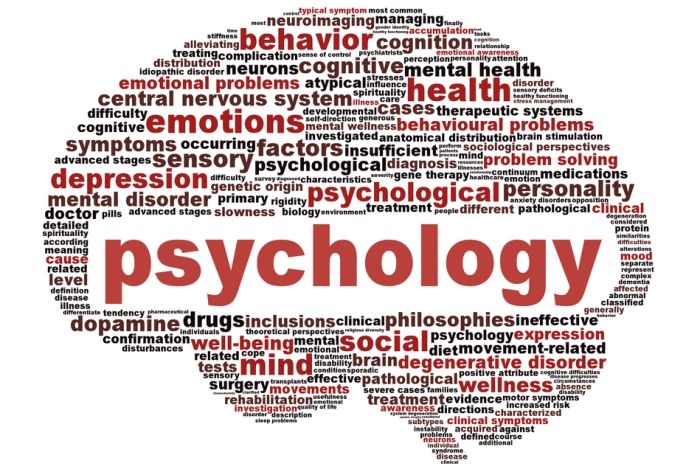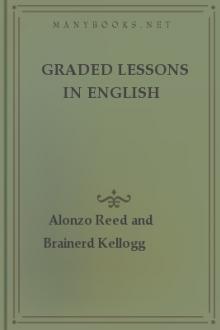The Science of Human Nature by William Henry Pyle (if you liked this book TXT) 📖

- Author: William Henry Pyle
- Performer: -
Book online «The Science of Human Nature by William Henry Pyle (if you liked this book TXT) 📖». Author William Henry Pyle
It is evident that the accuracy of our thinking depends upon these words standing for the truth, depends upon whether we have organized our experience in accordance with facts. If our word “Cæsar” does not stand for the real Cæsar, then all our thinking in which Cæsar enters will be incorrect. If our word “justice” does not stand for the real justice, then all our thinking in which justice enters will be incorrect.
This discussion points to the tremendous importance of the organization of experience. Truth is the agreement of our thought with the thing, with reality. We must therefore help the young to see the world clearly and to organize what they see in accordance with the facts and with a view to future use. Then the units of this organized experience are to be tagged, labeled, by means of words, and these words or labels become the vehicles of thought, and the outcome of the thinking depends on the validity of the organization of our experience.
Summary. Thinking is the passing of ideas in the mind; its basis is in the association of memory ideas. The basis of association is in original experience, ideas becoming bound together in memory as originally experienced. The factors of association are primacy, recency, frequency, intensity, and mental set or attitude. Reasoning is thinking to a purpose. We can be trained in reasoning by being taught to get vivid experience in the first place and in organizing this experience in helpful ways, having in mind future use.
CLASS EXERCISESA series of experiments should be performed to make clear to the students that the basis of the association of ideas is in experience and not in the nature of the ideas themselves.
Let the students, starting with the same word, write down all the ideas that come to mind in one minute. The teacher should give the initial idea, as sky, hate, music, clock, table, or wind. The first ten ideas coming to each student might be written on the blackboard for study and comparison. Are any series alike? Is the tenth idea in one series the same as that in any other?
For a study of the various factors of association, perform the following experiment: Let the teacher prepare a list of fifty words—nouns and adjectives, such as wood, murder, goodness, bad, death, water, love, angel. Read the words to the class and let each student write down the first idea that comes to mind in each case. After the list is finished, let each student try to find out what the determining factor was in each case, whether primacy, frequency, recency, vividness, or mental set. When the study is completed, the student’s paper should contain three columns, the first column showing the stimulus words, the second showing the response words, the third showing the determining factors. The first column should be dictated and copied after the response words have been written.
Study the data in (a) and (b), noting the variety of ideas that come to different students for the same stimulus word. It will be seen that they come from a great variety of experiences and from all parts of one’s life from childhood to the present, showing that all our experiences are bound together and that we can go from one point to any other, directly or indirectly.
Perform an experiment to determine how each member of the class thinks, i.e. in what kind of imagery. Let each plan a picnic in detail. How do they do it? Do they see it or hear it or seem to act it? Or does it happen in words merely?
Think of the events of yesterday. How do they come to you? Do your images seem to be visual, auditory, motor, or verbal? Do you seem to have all kinds of imagery? Is one kind predominant?
Test the class for speed of free association as described on page 193. Repeat the experiment at least five times and rank the members of the class from the results.
Similarly, test speed for controlled association as described on page 195 and rank the members of the class.
Compare the rankings in Nos. 4 and 5.
The teacher can extend the controlled association tests by preparing lists that show different kinds of logical relations with one another, from genus to species, from species to genus, from verb to object, from subject to verb, etc. Do the students maintain the same rank in the various types of experiments? Do the ranks in these tests correspond to the students’ ranks in thinking in the school subjects?
At least two series of experiments in reasoning should be performed, one to show the nature of reasoning and the other to show the ability of the members of the class.
Put several problems to the class, similar to the following: What happens to a wet board laid out in the sunshine? Explain. Suppose corn is placed in three vessels, 1, 2, and 3. Number 1 is sealed up air tight and kept warm? Number 2 is kept open and warm? Number 3 is kept open and warm and moist. What happens in each case? Explain.
Condensed milk does not sour as long as the can remains unopened. After the can is opened, the milk sours if allowed to become warm; it does not sour if kept frozen. Why? Two bars of metal are riveted together. One bar is lead, the other iron. What happens when the bars are heated to 150 C? 500 C? 1000 C? 2000 C? Answer the following questions: Is it ever right to steal? To kill a person? To lie? Which are unwise and mistaken, Republicans or Democrats?
In the above, do all come to the same conclusion? Why? Were any unable to come to a conclusion at all on some questions? Why? Do the experiments make it clear that reasoning is dependent upon experience?
Let the teacher prepare five problems in reasoning well within the experience of the class, and find the speed and accuracy of the students in solving them. Compare the results with those in the controlled association tests. Test the class with various kinds of mechanical puzzles.
The students should study several people to ascertain how well those people have their experience organized. Is their experience available? Can they come to the point immediately, or, are they hazy, uncertain, and impractical?
It is claimed that we have two types of people, theoretical and practical. This is to some extent true. What is the explanation?
From the point of view of No. 10, compare teachers and engineers.
If anything will work in theory, will it work in practice?
From what you have learned in the chapter and from the experiments, write a paper on training in reasoning.
What are the main defects of the schools with reference to training children to think?
Make a complete outline of the chapter.
REFERENCES FOR CLASS READING Colvin and Bagley: Human Behavior, Chapters XVI and XVIII. Dewey: How We Think, Parts I and III. Münsterberg: Psychology, General and Applied, Chapters VIII and XII; also pp. 192–195. Pillsbury: Essentials of Psychology, Chapters VI and IX. Pyle: The Outlines of Educational Psychology, Chapter XV. Titchener: A Beginner’s Psychology, Chapters V, VI, and X. CHAPTER IXINDIVIDUAL DIFFERENCES
Physical Differences. One never sees two people whose bodies are exactly alike. They differ in height or weight or color of the skin. They differ in the color of the hair or eyes, in the shape of the head, or in such details as size and shape of the ear, size and shape of the nose, chin, mouth, teeth, feet, hands, fingers, toes, nails, etc. The anatomist tells us that we differ internally just as we do externally. While the internal structure of one person has the same general plan as that of another, there being the same number of bones, muscles, organs, etc., there are always differences in detail. We are built on the same plan, i.e. we are made after a common type. We vary, above and below this type or central tendency.
Weight may be taken for illustration. If we should weigh the first thousand men we meet, we should find light men, heavy men, and men of medium weight. There would be few light men, few heavy men, but many men of medium weight. This fact is well shown in diagram by what is known as a curve of distribution or frequency surface, which is constructed as follows: Draw a base line A B, and on this line mark off equal distances to represent the various weights. At the left end put the number representing the lightest men and at the right the number representing the heaviest men; the other weights come in between in order. Then select a scale; we will say a millimeter in height above the base line represents one person of the weight represented on the base, and in drawing the upper part of the figure, A C B, we have but to measure up one millimeter for each person weighed, of the weight indicated below on the base.
Figure V—Frequency Surface—Weight
The solid line represents men, the broken line, women.
A study of this frequency surface shows a tendency for people to be grouped about the central tendency or average. There are many people of average weight or nearly so, but few people who deviate widely from the average weight. If we measure people with reference to any other physical characteristic, or any mental characteristic, we get a similar result, we find them grouped about an average or central tendency.
Mental Differences. Just as we differ physically, so also we differ mentally, and in the various aspects of our behavior. The accompanying diagram (Free Association) shows the distribution of a large number of men and women with respect to the speed of their flow of ideas. When men and women are measured with respect to any mental function, a similar distribution is found.
Figure VI—Frequency Surface—Free Association
Solid line, men; broken line, women. The numbers below the base represent the number of words written in the Free Association test, and the numbers at the left represent the number of people making the respective scores.
An interesting question is whether our mental differences have any relation or connection with one another. If one mental characteristic is of high order, are all the others of high order also? Does a good memory indicate a high order of attention, of association, of imagination, of learning capacity? Experiments show that mental characteristics have at least some degree of independence. But the rule is that they generally go together, a high order of ability in one mental function indicating a high order of ability in at least some others, and a low order of ability in one function indicating a low order in other functions.
However, it seems that abilities that are very much specialized, such as musical ability, artistic ability, etc., may exist in high order while other mental functions may be only mediocre. It is a common thing for a musical person to be of rather poor ability otherwise. To the extent that special abilities require specialized differences in the structure of brain, nervous system, or sense organ, they can exist in some degree of independence of other functions. Musical ability to some extent does require some such differences and may therefore be found either with a high or a low degree of ability in other characteristics.
It is doubtless true that at maturity the unequal power of mental functions in the same person may be partly due to the fact that one function has been exercised and others neglected. A person having very strong musical tendencies is likely to have such a great interest in music that he will think other activities are not worth while, and will consequently neglect these other activities.
 A very interesting statement of one of our contemporaries is that any person, to one degree or another, is both a psychologist and a philosopher - they say, life forces him to. On the one hand, the main driving force of every person is the craving for knowledge, the desire to reach certain social heights, the desire to be wise in any everyday situations - and this is the philosophy of life.
A very interesting statement of one of our contemporaries is that any person, to one degree or another, is both a psychologist and a philosopher - they say, life forces him to. On the one hand, the main driving force of every person is the craving for knowledge, the desire to reach certain social heights, the desire to be wise in any everyday situations - and this is the philosophy of life. 




Comments (0)